|
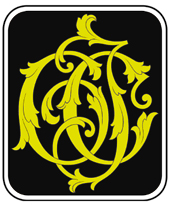
THE JOHN and CAROLYN GROSSMAN COLLECTION
The
Winterthur Library at the Winterthur Museum & Country Estate
Route 52, Kennett Pike, Winterthur, Delaware 19735.
www.winterthur.org.
Choice & Rare 3
|
|
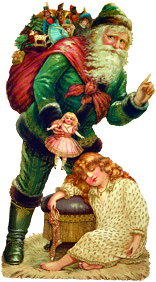
32"
TALL SANTA DISPLAY FIGURE
(German, c.1895)
When propped up on his easel back, Santa becomes a real presence. Chromolithographed,
laminated on thick cardboard, die cut and deeply embossed, his impressive figure is from a period when Santa's costume was
often other colors than red. It is also a time when the giftbringer paid careful attention to whether a child had been good
or bad, sometimes carrying switches as well as toys. His admonishing finger to the onlooker here is a reminder that while
the good sleeping child is being rewarded, the poorly behaved may not fare so well.
|
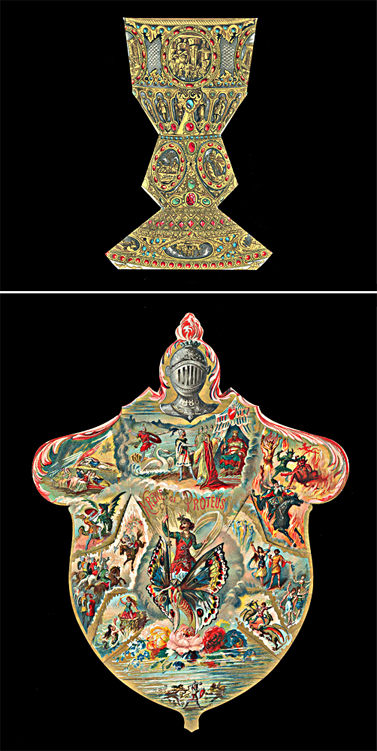
MARDI
GRAS KREWE OF PROTEUS BALL INVITATION (American, c.1888)
From the Golden Age of New Orleans Carnival, this elaborate production
in the shape of an angular paper chalice, richly chased in gold with jewels and vignettes, opens out in a series of eight
flaps to the theme for that year, "Legends of the Middle Ages." Not entrusted to the postal system, such invitations were
delivered by special couriers. The Krewe of Proteus made its debut in 1882, and was the first Krewe with a sizeable Creole
membership, and a Creole captain. Proteus was a mythical Sea God and a very appropriate addition to New Orleans' festive
winter celebration of the fantastic.
|
|
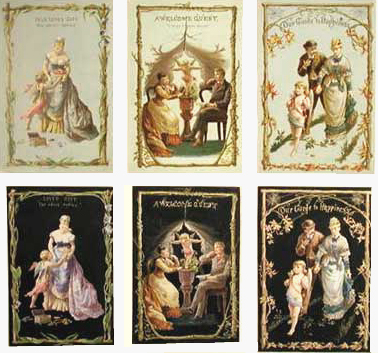
ORIGINAL
GREETING CARD
WATERCOLOR ART (English, c.1885)
The bottom three images on a black background are the original art for
the top row valentine cards (printed with different background colors) produced by
the London greeting card publisher,
Robert Canton. The printing process of the time, chromolithography, required that original art be completely redrawn by another
specialist artist into color separations on lithographic stones. As guides for design and color only, most original art of
the period appears not to have been kept once the stones were completed.
These rare survivors are from a Canton family
album.
|
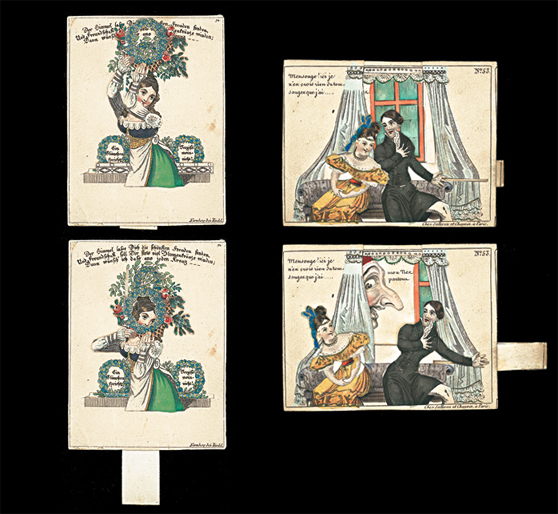
SENTIMENT CARDS
(German, French, c.1820-1830)
A
form of early greeting card expressing friendship, love and congratulations, sentiment cards of this period exhibited various
ingenious paper mechanism of moving parts jointed with knotted string and activated by pulling a tab, a novelty said to have
been invented in Vienna. Engraved, hand colored, hand cut and hand assembled, these cards are sometimes referred to as Biedermeier
cards in reference to the time period (1815-1835) and Germanic origins of most of them, although the amusing card on the right
was produced in Paris by Salleron and Chanoen.
|
|
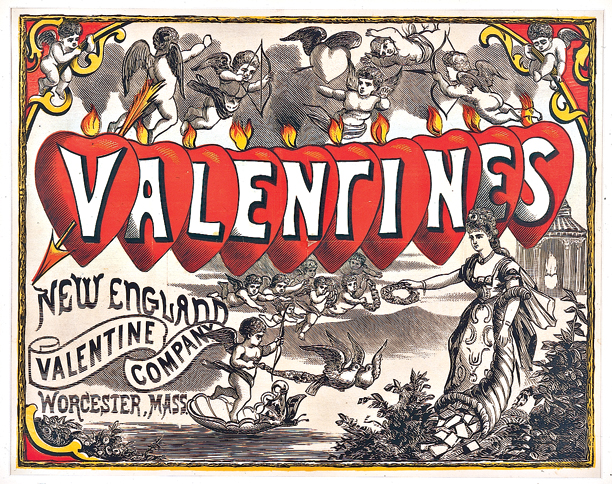
NEW ENGLAND VALENTINE COMPANY SHOW CARD (American, c.1875)
The N.E.V.C. was a legendary valentine
company started by the equally legendary entrepreneur, Esther Howland, in 1847. At a time when women in business were rare,
Howland proved to be a very competent business woman, building her company to a major position in the American lace valentine
market. Credited with a number of innovations in the creation of pretty sentimental valentines, she employed young women
on an assembly line basis to compose and paste by hand all the many small elements onto fancy lace paper. This large show
card (an early printer's term for a point-of-sale print) advertising her company may be the only example extant, printed from
wood engravings in three colors.
©2016 All Rights Reserved.
|
